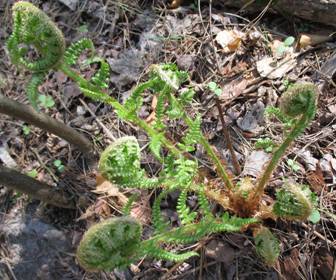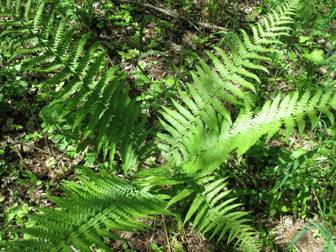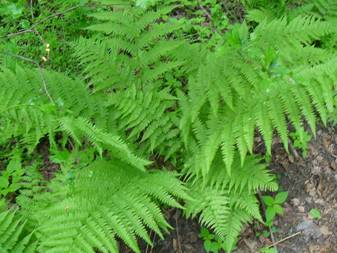


Male Fern (Dryopteris filix-mas), fam. Dryopteridaceae.
In addition to earlier described Bracken Fern, Eastern Marsh Fern and Ostrich Fern, there are two more fern species in our forest – Male Fern and Lady Fern. Many people know that there are male and female Poplar, Willow, Sea buckthorn, Hemp, Date palms, etc., in the direct meaning of these terms – some plants bring fruits, and other – only pollen. But in the case of ferns the figurative meaning is used – Male Fern looks "robust and manful", and Lady Fern – "tender and womanly". The history of these names lasts for several millennia.
Overall, the structure of these two related ferns is similar – a rosette of large leaves, appearing in early spring; the shape of the leaves allows to inscribe them into an elongated oval. On the other hand, Bracken Fern does not form rosettes, and its leaves can be inscribed into a triangle; Ostrich Fern is recognized by its separate spore-bearing fronds in the center of the rosette; and Eastern Marsh Fern – is much smaller in size.
Another common feature of Male and Lady ferns is somewhat assymmetrical arrangements of the leaflets of their fronds. As for the differences – the young leaves of Male Fern are covered by a dense "beard", and they are not as numerous and carved as in Lady Fern. Often these two species grow together in the same forest, since they have similar ecological preferences.
Male Fern is a known medicinal plant. Its rhizomes were used as an eradicative remedy against some tapeworms. Now this application is almost abandoned, becuase overdose causes strong poisoning; that is why it is unsafe to use ferns for self-treatment.